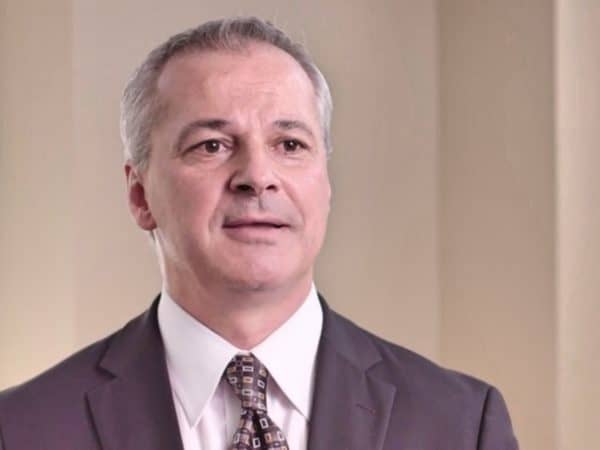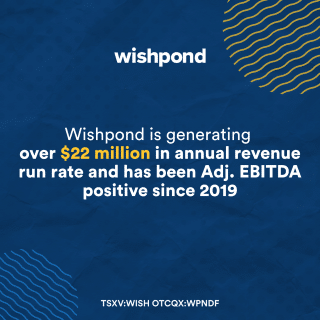

In tech, sometimes, everything old is new again.
Remember RFID, short for radio-frequency identification? Those ubiquitous tags have been used for everything from electronic toll collection to tracking airport baggage to the tagging of apparel. But that was yesterday, right?
Not exactly. The worldwide market for RFID, according to research firm IDTechEx Research will reach a whopping $18.68 billion by 2026, more than double what it was worth in 2014. The growth, says the firm that has been tracking the space since 1999, will be driven by things like NFC applications, healthcare, the military, and the Internet of Things.
According to Tim Harvie the history of RFID is one of untapped potential. A couple years ago, Harvie founded TrackX (TrackX Stock Quote, Chart, News: TSXV:TKX), a company designed to leverage the unique item level data resulting from RFID tagged assets by analyzing it and integrating them into a company’s back end ERP and business systems. True to its name, TrackX uses tools such as RFID to enable a truly next-generation tracking solution.
Cantech Letter talked to Harvie about what the future holds for the newly listed TrackX.
Tim, can you tell us a bit about the history of TrackX?
TrackX was formed two and half years ago to provide cloud-based, enterprise scalable asset tracking and inventory management solutions to customers in such industries as transportation, logistics, beverage, brewery, hi-tech, manufacturing, healthcare, agriculture, horticulture, hospitality, retail and the government, to name a few. While TrackX continues to expand upon its solution offerings with additional features, functions, analytics and support for a growing array of automatic identification technologies, some of the company’s intellectual property resulted from the acquisition of other RFID and asset tracking solution companies.
RFID (radio frequency identification) has been around for a long time. Why is TrackX applying this solution now?
It was in the early 2000’s when Walmart and the Department of Defense mandated the use of RFID to track shipments and high-value assets. This gave companies insight into the tremendous potential of RFID and really started to fuel the industry. But as it turned out, few companies had the skillsets required to effectively implement RFID-enabled solutions. In addition, RFID hardware and tags were expensive and standards were lacking. There were very few proven solutions from companies such as TrackX that were capable of truly leveraging the unique item level data resulting from RFID tagged assets, analyzing it and integrating it into a company’s back end ERP and business systems as necessary to drive value. Since then, companies have continued to recognize the significant value that RFID can generate. Standards have been established. Hardware is not only less expensive, but significantly more capable. We now see a broad acceptance of cloud-based solutions and an emerging array of sensor-based technologies resulting in more data regarding the location, state and condition of tagged assets than previously available. All of these factors have resulted in solutions that today represent a significant ROI to our customers and a rapid acceleration in the adoption of RFID-enabled asset tracking solutions.
We now see a broad acceptance of cloud-based solutions and an emerging array of sensor-based technologies resulting in more data regarding the location, state and condition of tagged assets than previously available.
What is the secret sauce of TrackX’s solution? What will enable the company to command high margins?
Our core team has more than 100 combined years of experience in supply chain and asset tracking technologies. We have been working for many years on solutions that really drive workflow efficiencies throughout an enterprise. We’re now doing it with better technology at a lower cost. TrackX is a software solutions company which is not only hardware agnostic, but has the ability to accommodate, within the same infrastructure, multiple tracking and tagging technologies and multiple attributes around those tagging technologies. It could be location, temperature, light, humidity, acceleration, among many others. We have the ability to capture and manage a massive amount of data and run it through a proprietary analytics platform to transform that data into meaningful information and executable business intelligence for our clients.
Sensors are becoming cheaper and cheaper aren’t they? How will you continue to make money in a space that is commoditizing?
Our customers typically have had limited visibility to the flow of assets within their enterprise or throughout the supply chain. The real value is not in the hardware or specific tags being affixed to an asset, but rather in the enterprise solution and what TrackX does with the data that this hardware can allow us to capture. As a result, the hardware companies love us because we can help protect better margins as they are no longer being forced to succumb to the same price pressure on a commoditized product. They are integrating their hardware into a solution where hardware is a necessary component, but is insufficient by itself to deliver value. It’s the solution and the integration with customer’s business systems and workflows that’s driving value. Our solution is cloud based with a SaaS model, but the important component is to be able to support a customer’s total enterprise needs. The reason we’re winning large deals is because we can accommodate multiple assets, across multiple locations for multiple divisions of the same company.
What kinds of markets is TrackX addressing?
There are conceivable applications in any industry, but some of the leading markets within which TrackX has delivered value include: food, beverage and brewery, transportation and logistics, information technology, government, hotel and hospitality, retail, healthcare, oil and gas, manufacturing, automotive and agriculture.
Is there a danger that TrackX does not have enough focus on a single addressable market in the early stages of its business plan?
There’s a lot of opportunity. There is certainly a danger that TrackX could get distracted or fragmented in its focus because these solutions are applicable across any industry. But we are focused on a few specific solutions such as yard management, returnable and reusable asset tracking, and high value asset tracking. Yard management refers to the tracking of trucks, trailers and associated activities within a distribution yard environment. Returnable and reusable assets include the tracking and utilization of chemical containers, beer kegs, hotel linens or horticultural racks to name a few. high-value assets would include such things as IT assets, lab equipment, tools, construction equipment or mobile inventory. What is important to us is that, regardless of the industry, TrackX is all about tracking assets and inventory at its core. While assets differ from industry to industry, the problems in managing those assets are largely the same. Combined with a highly configurable platform, this makes it fairly easy for TrackX to respond to opportunities in industries where we may not have a large presence at this time.
What are some verticals you are most excited by?
We are very excited about the projected adoption and growth across many of the industries that we are currently delivering solutions to. One of the greatest areas of opportunity as we move forward, however, will be in the retail industry. There is also a large focus currently on the Internet of Things. While the Internet of Things is relatively new, and connecting assets in a connected world is a relatively new opportunity, TrackX has been managing assets within the Industrial Internet of Things for a very long time.
Capturing and analyzing data gives you the opportunity to look at what you are doing and do it better. Until you can capture that information and turn it into meaningful information, you have no way to create efficiencies and find out what areas are working and what can be changed.
Can you give us an example of a customer that TrackX has helped? Detail what they were using before and how their business has become more efficient…
We’ve helped a major beef, pork and poultry producer in three key areas: they’ve improved the utilization of trailer inventory, docks and labor within the facility significantly compared to the ‘clip board and two-way radio communication’ that they were using previously; they have real-time visibility and monitoring of assets and attributions, including temperature within the facility which allows them to protect their beef, pork and poultry products. This meets and exceeds their compliance needs and reduces risk; and, they now have the opportunity to provide ongoing analytics as they’re capturing this data in a way that’s manageable. In a way that can be analyzed. With this data, we are identifying new areas to drive additional efficiencies within their operation. Capturing and analyzing data gives you the opportunity to look at what you are doing and do it better. Until you can capture that information and turn it into meaningful information, you have no way to create efficiencies and find out what areas are working and what can be changed. One good example is that they were bringing in three shunt units every morning at 7:00 a.m. to move trailers. They soon recognized they really only needed one up until 9:00 a.m., so why pay an additional two drivers for two hours each to just sit around? When you start looking at shunt activity, you can say, this driver is productive and our peak periods of traffic are from 11:00 a.m. to 1:00 p.m., so that’s when we need our drivers to be efficiently working.
TrackX recently appointed Art Mesher to its board. What qualities will he bring as an advisor?
Art and I have known each other almost 30 years and we have traveled many parallel paths over that period of time. Having Art as an advisor to TrackX will allow us to tap into his research, thought leadership and operating experiences with systems that manage resources-in-motion. His specific insights on creating world-class customer focused delivery platforms and executing a ‘buy and build’ strategy in the public marketplace will be valuable for us and we are thrilled to have him on our team.
You have an A-list of clients including Fortune 500 companies. How will you expand your relationship with brands such as this?
Because of the enterprise scalability of our solution, the custom configurability that goes with it and integration to the back-end systems, we become operationally critical to our customers. Not just within one location, but once they’ve received that value, the intent is to expand the deployment of TrackX solutions across multiple locations. The way we expand our relationships within brands is to do two things: we continue to expand across an number of locations that realize value based on our initial implementation; and we continue to track additional assets through a variety of workflows once they understand that this technology can deliver this significant amount of return to their business processes.
You’ve just completed a financing. How will the proceeds be used?
Proceeds will largely be utilized to implement and execute on the opportunities that we currently have within our existing customer base and to respond to new opportunities that are growing at a significant rate within the sales pipeline.
When do you anticipate profitability?
In order to respond to the increased demand for TrackX solutions, we will continue to expand upon our core team. We will also continue to invest in growing our network of integration partners. It will take some time to get new partners familiar with the various TrackX solutions and the respective hardware infrastructure. Given the upfront investment in scaling the business, I expect that TrackX will achieve profitability in 2017.
What milestones should investors look for over the next year?
We’ve penetrated a fairly significant number of accounts and investors should look for us to be able to deploy beyond the initial implementation throughout the organization and to capitalize on the expansion opportunities that they represent.
Disclosure: TrackX is an annual sponsor of Cantech Letter.
Leave a Reply
You must be logged in to post a comment.



 Share
Share Tweet
Tweet Share
Share




Comment